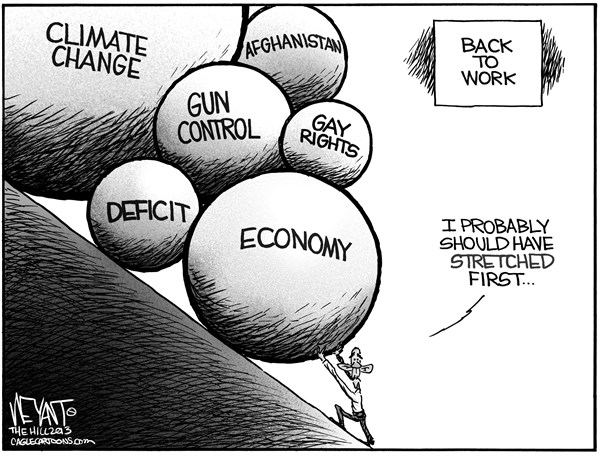A Lesson from Hurricane Sandy

As the new session of Congress gets underway there are many pressing issues facing our country, ranging from creating jobs to improving education. In the wake of Hurricane Sandy, however, new light is being shed on one issue of particular importance for the Central Coast: preparing for the numerous impacts of climate change. Sandy’s devastation is a scary foreshadowing of what could happen with increased frequency down the road if our communities and infrastructure are not prepared for extreme weather, sea-level rise, and higher temperatures.
The urgency of this problem was highlighted by the first draft of the 2013 National Climate Assessment released in January. This report lays out, in no uncertain terms, the realities of climate change and its widespread impacts on everything from our coastlines to drinking water systems to family farms.

In a nutshell, we need to get prepared and we need to start now. That’s why it is so important that we work together – in a bipartisan manner – to address these challenges and help local communities implement comprehensive mitigation and adaptation strategies. Additionally, investing in mitigation efforts now will reduce the cost both in dollars and in lives of recovering from future storms and extreme weather.
Our nation’s coastlines are especially vulnerable to the impacts of climate change, where rising sea levels, greater erosion, and higher tides and storm surges could impact everything from our transit systems to our drinking water. In our own backyard, the Lower Mission Creek flood control project was designed specifically to bolster flood protection.
Indeed, many communities will face similar challenges in the years ahead and must have the flexibility to respond in a manner that works best for them. Yet, given the high up-front cost and the broad public benefit of successful mitigation efforts, the federal government has an important role to play. This is why I have introduced the Coastal State Climate Change Planning Act, which would help coastal states get ready for future impacts of climate change. Whether it’s preparing for extreme weather events like Hurricane Sandy, or gradual sea level rise and erosion, it’s imperative that our infrastructure can handle it.
Of course, widespread impacts of climate change will affect people and communities in every state, not just those right on the coast. In the decades ahead, severe droughts, melting snowpack, more frequent heavy rains, and rising sea levels will create significant water quality and quantity challenges for our nation’s water and wastewater systems. The Association of Metropolitan Water Agencies and the National Association of Clean Water Agencies estimate that adapting to these challenges will require an additional $1 trillion in investment through 2050.
To address that need, I have introduced the Water Infrastructure Resiliency and Sustainability Act, which would help local water agencies upgrade their water systems. For example, utilities could use the funding to rebuild or relocate water infrastructure, develop new water supplies, increase water efficiency, or study and identify future scenarios to prepare for.
Finally, these changing weather patterns will have a significant impact on agriculture and our economy. California is the most productive agricultural region in the world, contributing $39 billion per year to the economy and supporting over one million jobs. California also ranks first nationwide in exports for “specialty crops” such as tree nuts, fruits, and vegetables, and second in dairy production. Agriculture is a billion-dollar industry in San Luis Obispo and Santa Barbara County alone and is a mainstay of the Central Coast economy and way of life.
But this bounty is threatened by potential climate-related impacts, including more limited water supplies, higher temperatures, changes in pollinator lifecycles, and increased prevalence of pests. These will pose tremendous challenges for our farmers on the Central Coast.
Recognizing this, California Agriculture Secretary Karen Ross established a new consortium of growers, educators, and technical experts to study and make recommendations on adaptation strategies. As Congress renews consideration of the Farm Bill this year, I will renew my efforts to ensure that it includes measures to help our farm communities prepare for these climate-related changes.
While climate change presents us with huge challenges, it also provides unique opportunities. Improving our infrastructure will create jobs and grow our economy in the short term, but it will also make our communities safer and our entire economy stronger in the long term. These challenges are very real, but not insurmountable, and we can’t afford to ignore them any longer.



